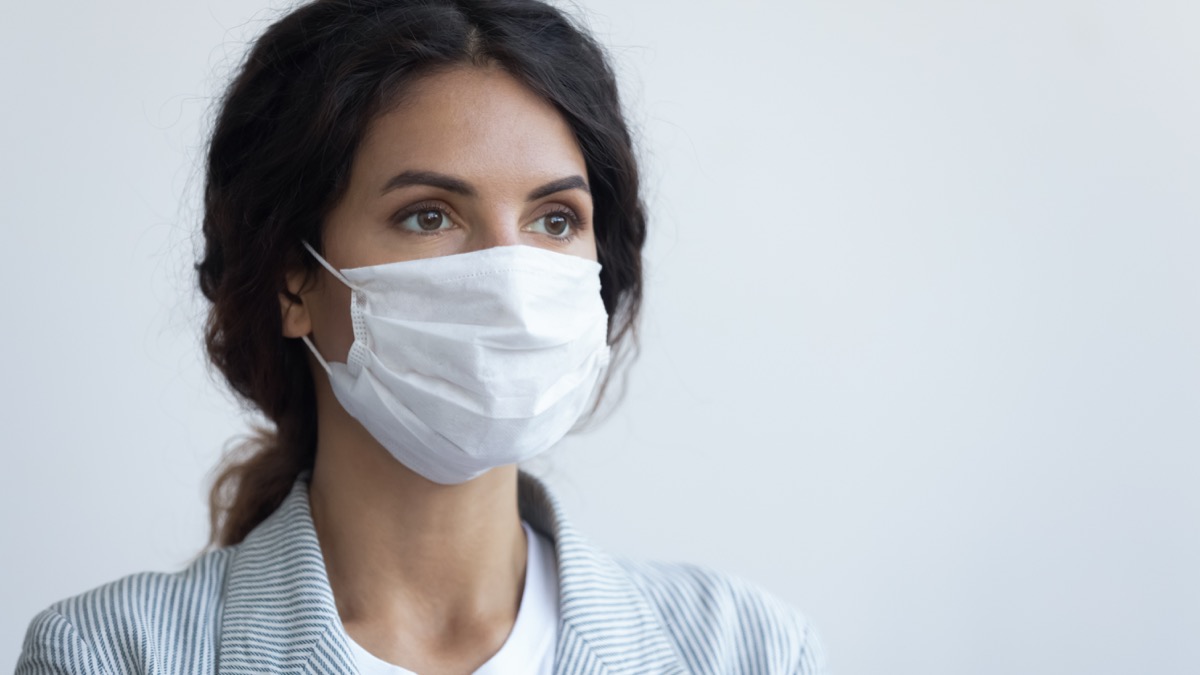Right now, the U.K. strain, which is said to be 50 percent more transmissible than the current dominant strain of the coronavirus in the U.S., has been identified in 20 states, the Centers for Disease Control and Prevention (CDC) reports. However, two other highly contagious strains—one from South Africa and one from Brazil—are causing additional concern, seeing as they have mutated the virus more dramatically and could make our current treatments and vaccines less effective, a theory experts are currently looking into. While those two strains have not yet been identified in the U.S., Anthony Fauci, MD, recently told Newsweek the new variants would be discovered stateside “sooner or later.” But one thing’s for sure—these new strains are likely to cause cases to climb. During an interview on CNN’s New Day on Jan. 19, Osterholm warned, “We’re going to suddenly see these variants come to play,” he said. “Based on the experience we’ve seen in Europe, in particular, South Africa, these variants can substantially increase the number of cases.” Osterholm is concerned that what comes next in the pandemic is unprecedented. On Jan. 14, he told local Minneapolis CBS News affiliate WCCO that these strains were a serious curveball. “The challenges are immense, simply immense,” he said. “If you think that we’ve had a problem to date with this virus, if these variants spread here and cause the problems that they have in [England and Ireland], God help us.” And for more up-to-date COVID news delivered straight to your inbox, sign up for our daily newsletter. Osterholm anticipates that a scary shift in the pandemic is approaching rapidly. “I worry desperately in the next six to 12 weeks, we’re going to see a situation with this pandemic unlike anything we’ve seen yet to date,” Osterholm told CNN. “And that is really a challenge that I don’t think most people realize yet.“ae0fcc31ae342fd3a1346ebb1f342fcb On Jan. 15, the CDC issued a warning that the U.K. variant could become the dominant strain in the U.S. by March, and experts like Scott Gottlieb, MD, the former commissioner of the Food and Drug Administration, also shared a similar warning. During an appearance on CBS News’ Face the Nation on Jan. 17, he said: “Right now, this new variant is about 0.5 percent of all infections nationally. There’s hotspots in Southern California and Florida that may be closer to 1 percent, but it’s going to double every week. So it’s about doubling every week. That’s the experience from other countries and that’s the experience we’ve seen so far in the United States. So it’s 1 percent now. It’ll be 2 percent, then 4 percent, then 8 percent, then 16 percent, then 32 percent. So in about five weeks, this is going to start to take over.” That would put us at the middle of February, according to Gottlieb’s prediction. “What we’re looking at is a relentless strike from this virus heading into the spring, whereas infections really would have started to decline in the spring,” he pointed out. “We would have had a quiet spring. We could have persistently high levels of infection in the spring until we finally get enough people vaccinated.” For some helpful mask tips to keep you safe, check out The CDC Warns Against Using These 6 Face Masks. Osterholm said vaccines are also a key component to mitigating the impact of the pandemic and the new strains. However, he said, “we can’t make the vaccine go much faster than it is right now.” During a Jan. 17 interview with NBC’s Meet the Press, Fauci also said the vaccine is the way to avoid more significant spread of COVID, even if the new variants create more infection. “The easiest way to evade this negative effect of these new isolates is to… just when the vaccine becomes available, people should get vaccinated,” he said. “If we can get…the overwhelming majority of the population vaccinated, we’d be in very good shape and could beat even the mutant.” And for more on where the U.K. strain is so far, check out The New COVID Strain Is Now in These States. As for how bad the next phase of the pandemic gets, Osterholm said, it’s all about how quickly we take action. “The difference is going to be, are we going to react now or later,” he explained. According to Osterholm, the Biden administration will take “dramatic steps” to mitigate the spread of the new variants. However, he added that “the question is how soon will we do it? Do we put the brakes on after the cars wrapped around the tree, or we try to put the brakes on before we leave the intersection?” To see which precautions we could afford to drop, check out These 2 COVID Precautions May Not Be Necessary After All, New Study Finds. Keep reading Best Life for more.



